If you’re making the jump from a smartphone to your first interchangeable lens camera, a beginner DSLR can be the perfect option. The best DSLRs for beginners are priced affordably and designed with novice users in mind. They’ll offer full manual control over the image-making process, sometimes with advanced features from models higher up in the range, and you can often find one of these cameras for under £500 / $500.
What’s more, manufacturers often offer kits that bundle the DSLR body with a lens and several other accessories for a price that would be much less than if you had bought them all individually. These bundles are a great way to get a small starter kit together quickly and inexpensively to get you started on your photographic journey.
Advantages of a beginner DSLR
It’s true that most of the photographic world is moving towards mirrorless cameras. And if you’re more interested in this technology, we can certainly recommend the best mirrorless cameras to buy. However the best DSLRs for beginners are still our favourite choice for learning.
For starters, even a beginner DSLR will have a built-in optical viewfinder, which is really useful when you’re learning about the Rule of Thirds and the art of image composition. Sure, many mirrorless cameras have electronic viewfinders now, but an optical viewfinder gives you the truest sense of a scene because you’re seeing it through the lens.
Beginner DSLRs also provide longer battery life per charge than their mirrorless counterparts. And many beginner photographers prefer the deep handgrip and weightier design of a DSLR.
- Best DSLRs you can buy today
- Best DSLRS for video
Who makes beginner DSLRs
Canon, Nikon and Pentax are the only brands that still sell beginner DSLRs. And you’ll find mostly beginner Canon cameras on this list. That’s because Nikon, while still selling DSLRs, has discontinued its beginner models. Though these are still widely available. And Pentax, which has vowed to only produce DSLRs, still has a few solid options in its range.
With that in mind, let’s take a look at the best DSLRs for beginners that you can buy today. These recommendations are based on our tests with these products.
- Photography for beginners: essential techniques and which cameras to buy
The best DSLRs for beginners you can buy today
Canon EOS Rebel SL3 / 250D
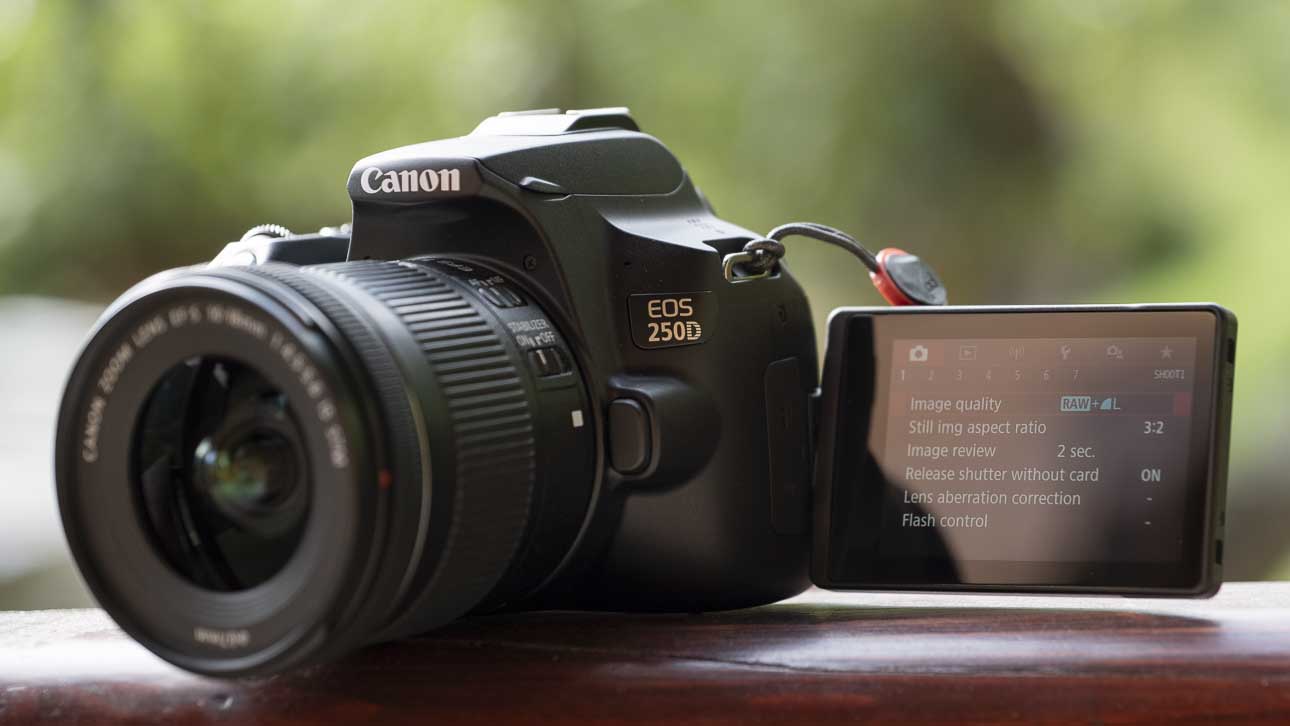
Specification
- Camera type: DSLR
- Announced: 10th April 2019
- Sensor: 24.1Mp APS-C CMOS
- Lens mount: Canon EF-S
- AF System: 9-point phase detection, Dual Pixel CMOS AF (via Live View or Video)
- Viewfinder: Pentamirror 95% coverage optical viewfinder
- Screen: 3-inch vari-angle touchscreen with 1,040,000 dots
- Max video resolution: 4K (3840 x 2160) at 23.98, 25fps
- Dimensions (W x H x D): 122.4 x 92.6 x 69.8mm
- Weight: Black/Silver 449g, White 451g
The Canon EOS 250D is called the Canon EOS Rebel SL3 and the EOS Kiss X10 in some territories and it’s built with beginner photographers in mind. It’s also the smallest DSLR with a moveable screen available and as it has a Dual Pixel CMOS sensor, its focusing system is snappy whether you compose images in the viewfinder or on the vari-angle screen.
With just 9 points available when you’re using the optical viewfinder, it’s often easier to use the screen to compose images as you can tap on the subject to get it in sharp focus.
The 250D makes a significant step up from the Canon EOS 4000D, and it’s a more versatile camera to use.
Canon has given the Rebel SL3 / 250D a choice of two interfaces that you can selected via the menu. The Guided interface which is great for beginners and the Standard interface which is better for more experienced photographer. They give the same type of information, but the Guided interface looks friendlier and is easier to understand.
There’s a 24.1Mp APS-C format sensor inside the Canon EOS Rebel SL3 / 250D and it delivers great results with a good level of detail. The camera also handles exposure and white balance well in the default settings so you can concentrate on getting the composition right.
£530
$599.99For
- APS-C format sensor
- Phase detection autofocus system in video mode
- Vari-angle touchscreen
Canon EOS 2000D / EOS Rebel T7
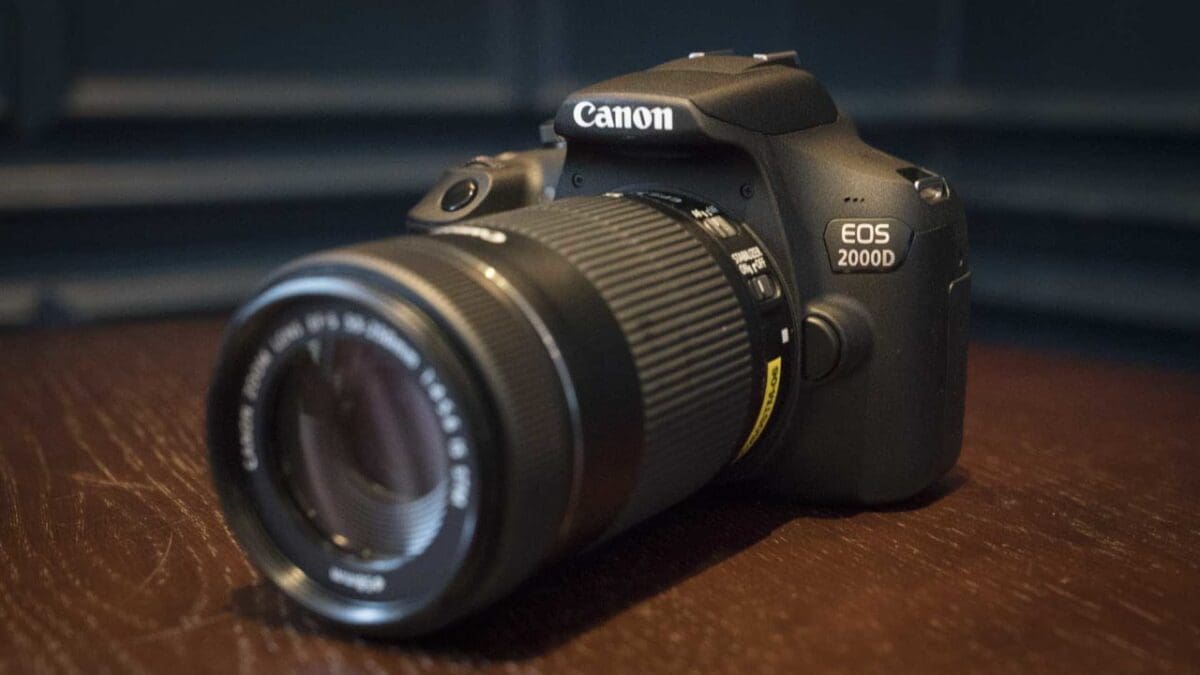
Known as the Canon EOS Rebel T7 in the US, the EOS 2000D is the replacement for the Canon 1300D (aka EOS Rebel T6) and boasts a 24-million-pixel sensor rather than the 18MP chip Canon had previously been using in its beginner cameras.
This sensor is paired with a DIGIC 4+ processing engine (the same as is in the 1300D). This enables a sensitivity range of ISO 100-6,400 (expandable to ISO 12,800) and a maximum continuous shooting speed of 3fps for 150 jpegs or 11 raw files. It’s also possible to shoot Full-HD (1920 x 1080) movies at 30, 25 or 24fps (frames per second) for up to 29 minutes 59 seconds.
While advanced exposure modes such as aperture priority, shutter priority and manual are available, Canon’s Scene Intelligent Auto mode and a collection of scene modes are on hand to help inexperienced photographers get good results easily.
There’s also a built-in features guide to help new photographers get to grips with their camera. However, it’s worth noting that the Guided Mode seen on the Canon M50 and EOS 800D / EOS T7i that simplifies controlling the camera is not available on this camera.
As an entry-level model, the 2000D doesn’t have ground-breaking technology, the most robust build or an especially extensive specification list, but it has beginner-friendly exposure modes as well as more advanced options that let you take control when you become more confident.
It’s a competent entry-level DSLR that produces good quality results. Priced at less than £500 / $500, the EOS 4000D / Rebel T7 is a solid choice for someone wanting to make their first steps in photography without committing too much money to the pursuit at this stage.
You can find a range of Canon EOS 2000D / Rebel T7 kit options at Amazon UK and Amazon US.
£369
$479For
- Simple controls
- Good detail levels
- Extensive lens range
Nikon D3500
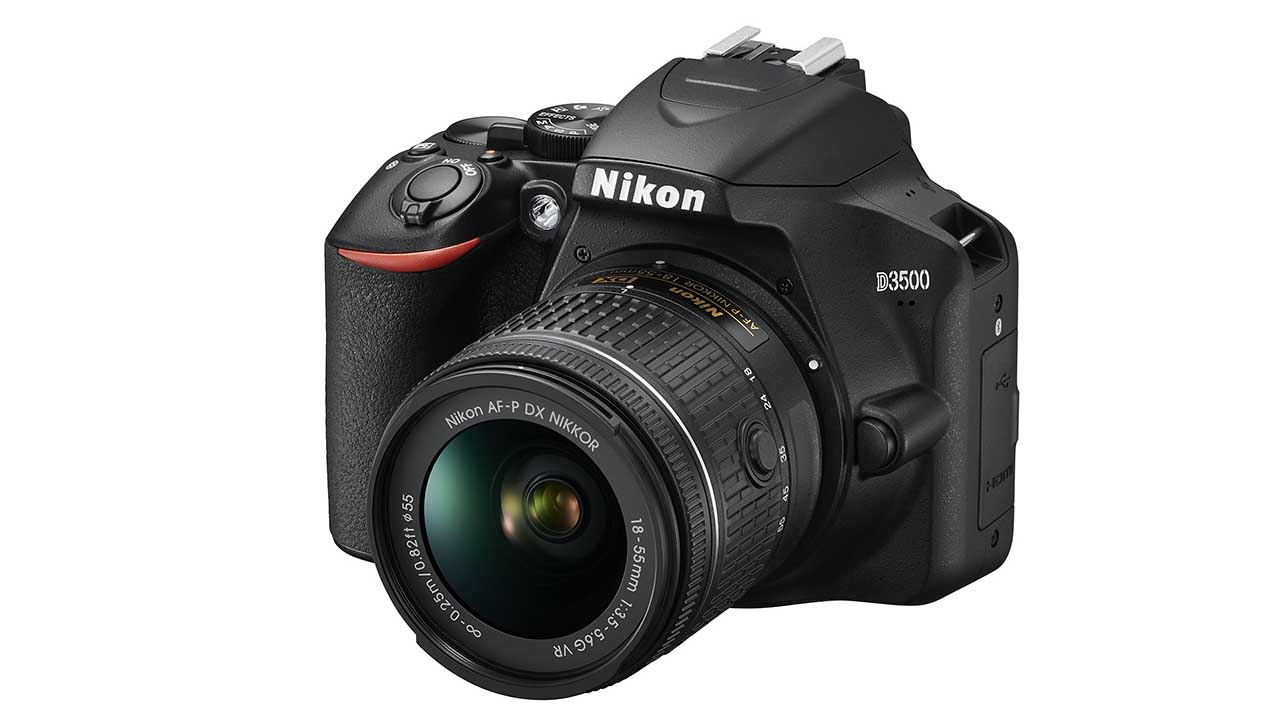
Specification
- Camera type: APS-C (DX) format DSLR
- Announced: 30th August 2018
- Lens mount: Nikon F
- Sensor: 24.2Mp APS-C (23.5 x 15.6mm)
- Sensitivity range: ISO 100-25,600
- Autofocus system: Viewfinder: 11-point with 1 cross-type, Live View: Contrast detection
- Maximum continuous shooting rate: 5fps (frames per second)
- Viewfinder: Optical with pentamirror 95% coverage
- Screen: 3-inch TFT LCD with 921,000 dots
- Storage: SD/SDHC/SDXC UHS-I
- Dimensions: 124 x 97 x 69.5mm
- Weight: 365g body only
While the Nikon D3500 is now listed as discontinued, no successor has been announced and it can still be found on sale.
Inside the D3500’s monocoque body is an APS-C (DX) format sensor with 24.2 million effective pixels. This is paired with an Expeed 4 processing engine and its a combination that’s capable of delivering excellent-quality images.
With just 11 individually selectable points, the D3500 AF system’s specification may seem unimpressive next that of the average mirrorless camera, but it’s fast and capable of getting moving subjects sharp.
As it’s a DSLR, the D3500 has an optical viewfinder so you see a natural view of the scene with no interpretation by the camera. There’s also a fixed 3-inch screen with 921,000 dots on the back of the camera which can be used to compose images in Live View mode (as well as review them), but the Live View autofocus system is quite sluggish.
One of the main selling points of the Nikon 3500 for beginners is its excellent Guide Mode that teaches the user about photography and the camera controls using non-techy language.
£479
$596For
- Excellent 24Mp APS-C format sensor
- Superb guide mode that teaches you about photography
- Compatible with an extensive range of lenses and accessories
Canon EOS Rebel T8i / EOS 850D
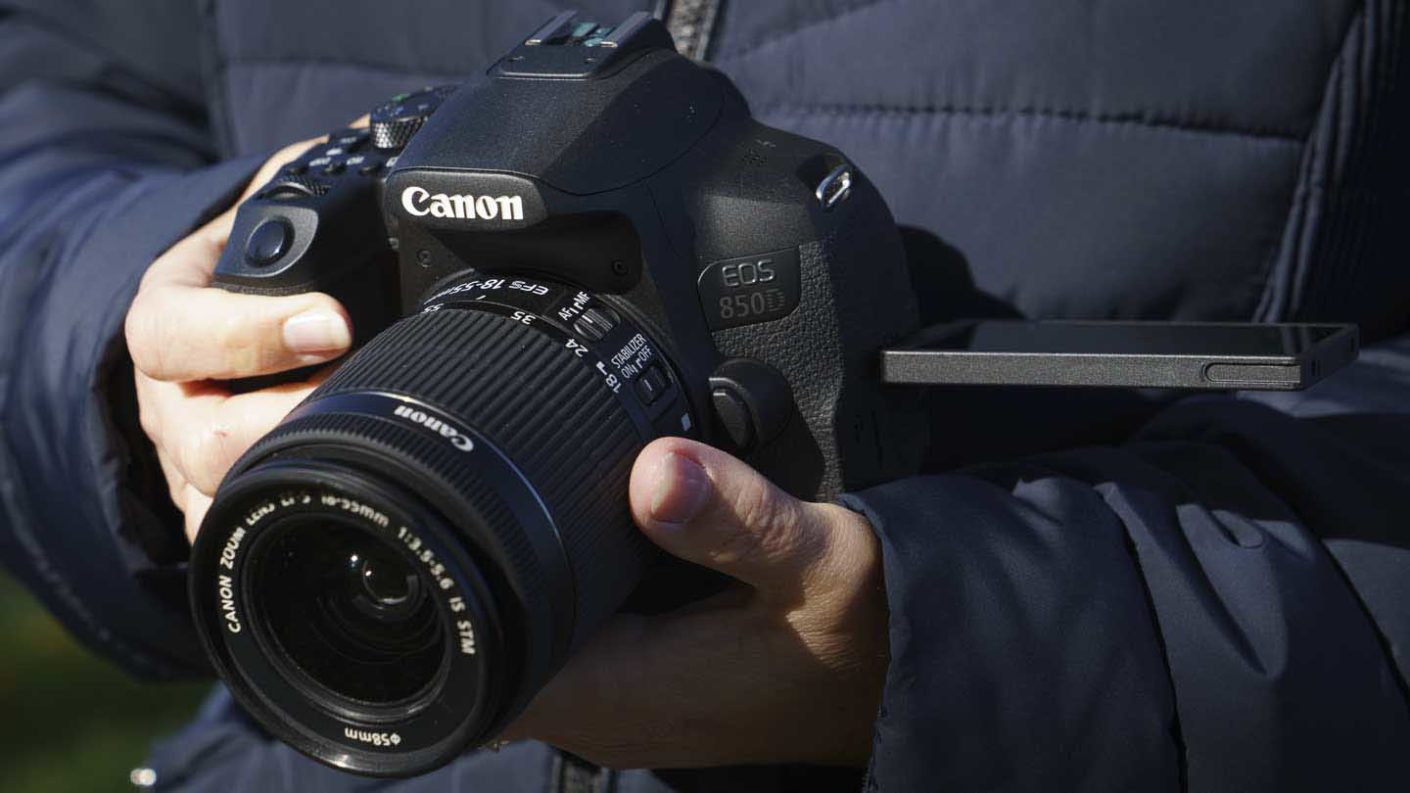
Specification
- Camera type: Digital SLR
- Announced: 13th February 2020
- Sensor: 24.1Mp APS-C (22.3x14.9mm) CMOS
- Processor: Digic 8
- Lens mount: EF/EF-S
- Sensitivity range: Stills: ISO 100-25,600, expandable to ISO 51,200, Movies: ISO 100-12,800 expandable to ISO 25,600
- Autofocus system: Viewfinder: 45 cross-type AF points (45 f/5.6 cross-type AF points, 27 f/8 points (9 cross-type), centre point is f/2.8 and f/5.6 dual cross-type), Live View: Dual Pixel CMOS AF (phase detection) with up to 143 points
- Metering system: Viewfinder: 220,000-pixel RGB+IR sensor, Live View: imaging sensor divided into up to 384 zones
- Viewfinder: Optical pentamirror covering 95% with 0.82x magnification
- Screen: 3-inch 1,040,000-dot Clear View II vari-angle touchscreen
- Built-in flash: GN 12 @ ISO 100 with Integrated Speedlite Transmitter
- Maximum continuous shooting rate: 7fps with viewfinder, 7.5fps in Live View mode
- Maximum video resolution: 4K UHD 3840 x 2160 (25, 23.98 fps)
- Memory: SD/SDHC/SDXC UHS-I
- Battery: Rechargeable Li-ion Battery LP-E17, up to 800 shots with viewfinder, 310 shot in Live View mode
- Dimensions: 131.0 x 102.6 x 76.2mm
- Weight: 515g including battery and memory card
Known as the Canon EOS 850D in Europe and the Canon EOS Rebel T8i in the USA, the Canon 850D is a 24.1Mp DSLR camera that sits towards the entry-level end of Canon’s enthusiast-level camera range.
As a modern DSLR, the Canon T8i /850D has a Live View system which enables images to be composed on the screen on its back, as well as an optical viewfinder. This means that there are sensors dedicated to the autofocusing and exposure metering when the viewfinder is in use. In Live View mode, the T8i’s imaging sensor is used to gather the necessary information.
Canon has paired the 8Ti/850D’s sensor with the Digic 8 processing engine. For stills, this combination enables a standard sensitivity range of ISO 100-25,600, which can be expanded to ISO 51,200. In video mode, the range is ISO 100-12,800 (expandable to ISO 25,600).
There’s also a maximum continuous shooting rate of 7fps (frames per second when the viewfinder is in use and 7.5fps in live view mode.
Canon has given the EOS Rebel T8i / EOS 850D an attractive collection of features with things such as a vari-angle touchscreen, excellent touch control, a very good autofocus system and a well-thought control arrangement. What’s more, the Canon EOS Rebel T8i / EOS 850D is lightweight and easy to carry with a good control arrangement and excellent touch-control. It also delivers very nice images with a good level of detail in a wide range of conditions.
£840
$749.99For
- Excellent AF systems
- Vari-angle-touchscreen
- Compatible with a huge range of lenses and accessories
Pentax KP
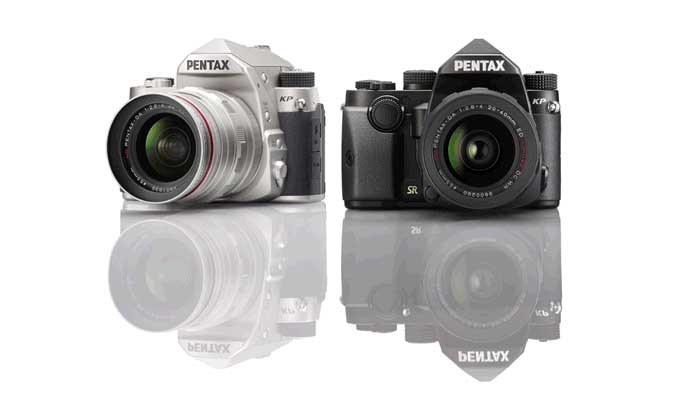
Specification
- Sensor: 24.32 million APS-C CMOS
- Maximum Shutter Speed: 1/6000sec mechanical / 1/24,000sec electronic
- Video: Full HD video at 60i/30p
- Screen: 3in, 921k-dot, tiltable LCD
Inside the Pentax KP is a newly developed APS-C-sized CMOS image sensor with 24.32 million effective pixels, which has no anti-aliasing filter for resolving finer details.
The sensor, in combination with a PRIME IV imaging engine, enables the Pentax KP to shoot night scenes at the super-high sensitivity of ISO 819,200.
The Pentax KP doesn’t offer 4K video recording. However, it does include a 4K Interval Movie mode that stitches together a series of 4K-resolution still images (3840 x 2160 pixels) at a fixed interval to create a single movie file.
Also on-board the Pentax KP is the company’s Pixel Shift Resolution System, as seen in other recent Pentax cameras and similar to what we’ve seen from recent Olympus cameras.
This technology enables the KP to capture four images of the same scene by shifting the image sensor by a single pixel for each image. The KP then stitches them into a single, high-resolution composite image.
Ricoh says that compared to the conventional Bayer system in which each pixel has only a single colour data unit, this new system obtains all colour data in each pixel to deliver ultra high-resolution images with more accurate colours and much finer details than those produced by conventional APS-C-sized image sensors.
Ricoh says it has also added an ON/OFF switch for the motion correction function to make the Pixel Shift system usable with a wider range of subjects. The motion correction system promises to automatically detect a moving object during continuous shooting and minimise negative effects during the synthesising process.
The Pentax KP also has a five-axis SR II shake reduction mechanism that delivers a compensation effect of approximately five shutter steps.
When taking a panning shot, this mechanism controls the SR unit to compensate for all external factors without requiring any switching action.
£1099
For
- Pixel Shift Resolution system
- High sensitivity of ISO 819,200
- 5-axis shake reduction
Pentax K-3 Mark III
Specification
- Camera type: DSLR
- Sensor: 25.73Mp APS-C format (23.3 x 15.5mm) CMOS
- Lens mount: K (KAF2)
- Sensitivity range: ISO 100- 1,600,000
- AF system: SAFOX 13 phase detection system with 101 point (25 cross type)
- Viewfinder: Optical with pentaprism, 100% coverage
- Screen: Fixed 1,620,000-dot touchscreen
- Metering: 307,000-pixel RGBIr sensor, Multi-segment, Center-weighted, Spot and Highlight-weighted
- Maximum video resolution: 4K (3840 x 2160) at 30/24p
- Storage: Dual SD/SDHC/SDXC, Slot 1UHS-II, Slot 2 UHS-I
- Battery: Rechargeable Li-ion D-LI90
- Battery life: 800 images
- Dimensions (H x W x D): 103.5 x 134.5 x 73.5mm
- Weight: 8820g
Pentax’s flagship APS-C-format DSLR, the Pentax K-3 Mark III, might be at the top end of this best DSLRs for beginners list, but it’s one of the most solid options you can buy. Inside is a 26.78-megapixel CMOS sensor with 5-axis sensor shift shake reduction.
4K video recording is also available at up to 30p, as well as Full HD at up to 60p. And if you want to try your hand at vlogging there are other nice features such as built-in stereo microphones and an external microphone port.
It can shoot at up to 12fps in continuous shooting mode, making it one of the best all-rounders on this list.

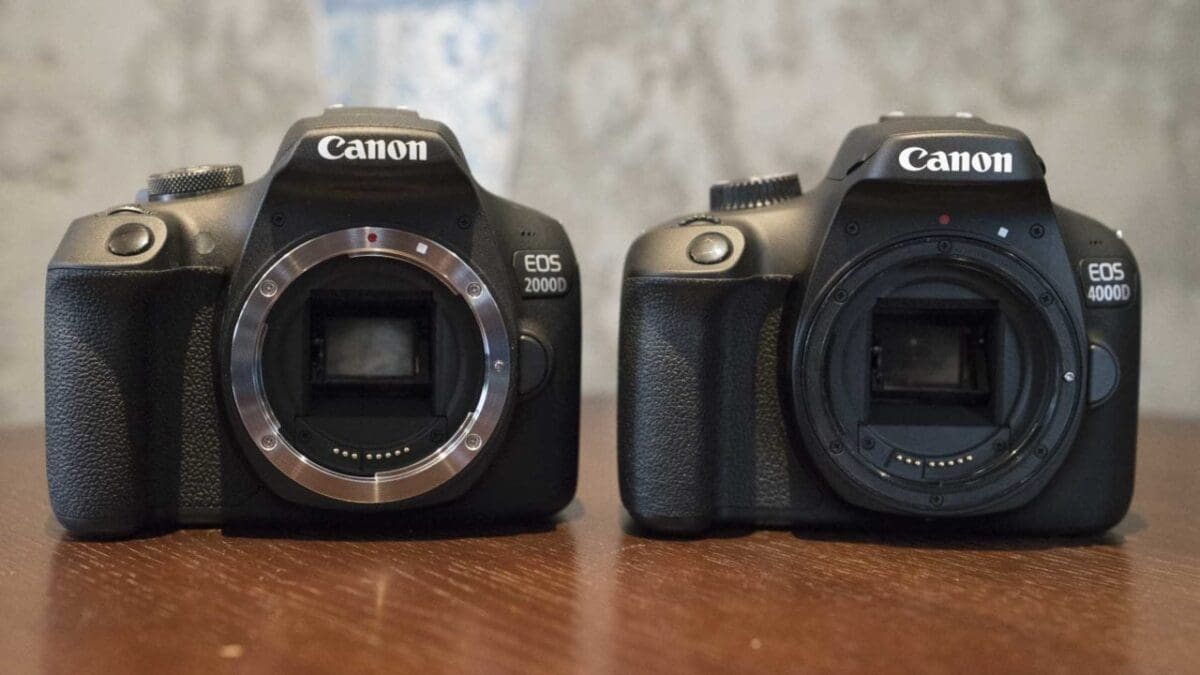
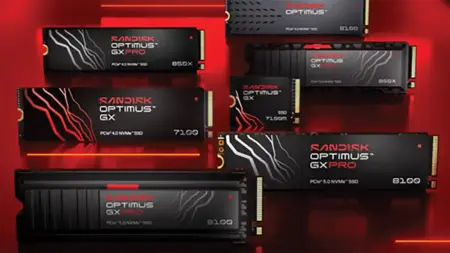
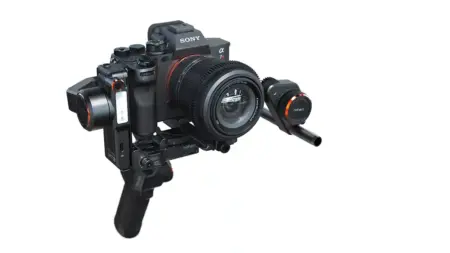
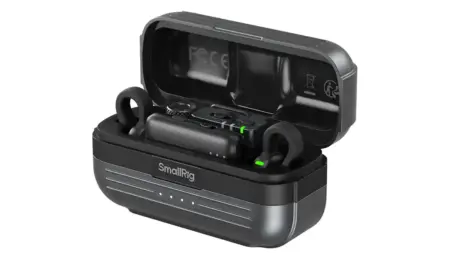
Leave a Reply
You must be logged in to post a comment.